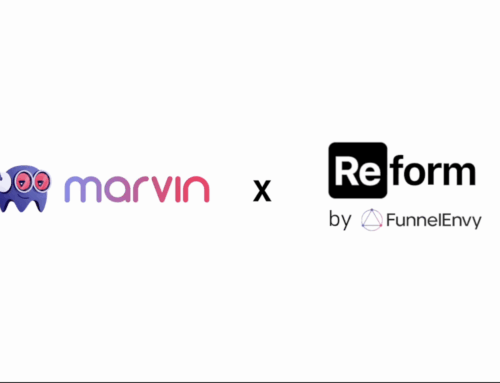Revenue is a top priority for any business, no matter how big, no matter how small. It’s fundamental: without money coming in, you’ll have nothing to cover overheads or invest back into the company.
We all know that a hard-working sales team is key for bringing in new business and increasing revenue. But revenue is increasingly a priority for marketing teams too.
Many marketers turn to ROI (return on investment) to determine the profitability of a promotional campaign. In fact, more than 40% of marketers claim their main priority in 2021 is to “better measure the ROI of [their] demand generation initiatives”.
It makes sense: effective marketing should achieve a healthy return on investment (ROI) and generate new revenue. A portion of this can then be invested back into marketing campaigns to keep bringing in more money, and so on. It’s a cycle of profitability that can help businesses grow and grow.
And revenue attribution can help you create more effective, successful marketing campaigns. But what does it mean and involve?
In this article, we’ll explore everything you need to know about revenue attribution and how it relates to improving marketing ROI.
What is revenue attribution?
Revenue attribution (also known as marketing attribution) is a reporting process that involves matching revenue brought in, to a specific marketing output.
For example, you might utilize revenue attribution techniques to monitor the impact that a particular piece of thought leadership content made on sales within two months of its publication. Or you may prefer to track the effect that a new series of videos made on revenue over a shorter or longer period.
Businesses have more channels — and more opportunities — to reach consumers than ever with targeted marketing campaigns. But it’s unbelievably competitive and marketing teams must take advantage of real creativity to make an impact, especially in the most crowded sectors or niches.
Employing revenue attribution techniques empowers marketers to hone in on their most effective work and understand how they can keep refining their techniques over time.
Why is revenue attribution important and how can it help?
Revenue attribution is crucial for marketing teams who want to gain a clear insight into their strategies’ value and learn how they affect customer engagement. Fortunately, there’s a wealth of data available online to help marketers build an accurate overview of campaign performance and ROI.
Identifying how specific campaigns and strategies have been received by audiences (target and/or general) enables you to make more informed, calculated decisions on future campaigns.
You’ll have a tighter grasp on what works, what doesn’t, and what elements should be combined to cultivate the most impactful marketing campaigns. You’ll be able to capture more leads, close more sales, and improve ROI thanks to continued analysis.
Another key benefit is that revenue attribution helps businesses (particularly those in their infancy or experiencing financial challenges) get more out of their marketing spends while still streamlining their budget.
Essentially, it can make your money go further. You’re not throwing ideas at the wall to see what sticks — you’re basing your decisions on provable facts.
You can jettison those marketing techniques and campaigns that fail to bring in satisfactory ROI. All resources usually dedicated to those will be put to better use on more effective options instead.
How can you use a revenue attribution model to measure and ramp up your marketing ROI?
We understand what revenue attribution is and why it matters. But how do you put a revenue attribution model to work and start improving your marketing ROI?
While it can appear complicated for newcomers, and more than a little daunting, it will seem far simpler when we take a deeper look. In this section, we’ll cover how to use this model to both track and measure ROI — and improve it.
What types of revenue and marketing attribution models are available?
First-touch attribution
The first-touch (or first-click) attribution is one of two single-source models (along with last-touch attribution, below).
In this model, the first channel with which a converted user engages receives all credit for generating revenue. This could be an in-depth whitepaper, a blog post, a video, or any other piece of marketing content that captures the lead’s interest enough to drive a conversion.
For example, around half of marketers describe webinars as the top-of-the-funnel format generating the most high-quality leads.
While a spectacular piece of content can be enough to push users towards a sale, the first-touch model may have a blindspot — a failure to take other interactions following this first one into consideration.
As a result, you may not have an accurate insight into how effective other channels are in swaying users’ decisions.
Last-touch attribution
Last-touch (or last-click) attribution is regarded as another easy model. Why? Because it involves looking at the final touchpoint before the sale is completed, which is usually simple to find.
The last touch could be something as straightforward as a well-researched sales call or a webinar that whets the lead’s appetite and inspires them to commit to a purchase.
However, the last-touch attribution model may overlook previous interactions with a user. These could include a visit to your website or hearing an ad for your business on a podcast. And, again, this could cause you to overlook the value of other channels
Multi-source attribution
As you can probably assume, the multi-source (or multi-touch) attribution model focuses on all channels that lead to a conversion. Multiple touchpoints will be attributed instead of just one.
Still, while the multi-source attribution model is more of a holistic approach to measuring marketing success, there’s a crucial factor to consider: it doesn’t provide an accurate reflection of a specific touchpoint’s actual contribution to a conversion. It could lead to a false representation of certain channels’ role in the customer journey.
Six multi-source attribution models are available:
- Linear: This is the easier model to implement, providing all touchpoints with the same weight, though it can be hard to determine which were most important (as mentioned above).
- Time decay: Touchpoints will be separated by bigger and bigger gaps in long sales cycles. With the time decay model, you’ll apply greater credit to those in the later stages than those in the earlier period. They might not have been as valuable to the eventual outcome, and in particularly long sales cycles, the buyer might have totally forgotten about their initial interactions with your business anyway.
- U-shaped: A U-shaped revenue attribution model applies the credit to two main touchpoints, with fixed percentages. These are the initial touchpoint and the last, as well as any between those points. The first and last touchpoint receive 40% of the credit each. The 20% remaining is split between those touchpoints taking place in between.
- W-shaped: A W-shaped model is similar to the one above, but it adds an extra touchpoint: when a prospect is converted into a lead. So, this covers the first touchpoint, the last touchpoint, and the occurrence falling somewhere between them. These receive 30% of the credit each, while the remaining 10% is shared among other touchpoints that may be detected between them.
- Full path: The majority of the credit is assigned to the key steps in the customer journey and the rest goes to those touchpoints between. Unlike the other models explored so far, this includes follow-up chats between the customer and the sales team.
- Custom: Teams can come up with their own weighting shares according to the channels used, customer behaviors, etc. For example, you may decide that a user who subscribed to your newsletter should have more weight than someone who clicked on an ad.
Weighted multi-source attribution
Weighted multi-source attribution involves accounting for every interaction during the sales cycle and assigning weight to the most important touchpoints. This model can lead to the most reliable views of a customer’s journey.
However, it’s one of the most challenging to put into effect, as weight must be applied to a potentially large number of touchpoints.
Why is it so important for marketing and sales teams to work in partnership?
Traditionally, businesses tend to keep sales and marketing activities separate. They consider marketing teams’ role to create leads and sales teams’ to transform them into paying customers. That’s simple enough to understand — but it could be a big mistake.
Why?
Because overhauling and refining your marketing to achieve an increase in leads won’t guarantee a rise in high-quality leads.
Yes, marketing teams can drive clicks and interest, but a large proportion of leads could be of a lower quality than expected.
The aim should be to bring in leads more likely to evolve into conversions, based on carefully targeted marketing with specific demographics in mind.
By uniting your marketing and sales teams, you can start to develop a clearer understanding of which marketing efforts bring in the most valuable leads and, ultimately, conversions. Those that consistently generate the weakest leads and harm ROI should be replaced.
What are the key benefits of using these revenue and marketing attribution models?
Here are five key benefits of using revenue and marketing attribution models:
-
Improved ROI
Effective revenue attribution provides businesses with an accurate insight into how much return they gain on their marketing investments. Over time, you can start to cultivate a better awareness of those techniques and strategies that engage your target audience best.And you’ll keep reaching the right people with the most appealing messaging. This will increase the number of conversions you can expect to achieve and, eventually, the ROI you earn.
-
Save money on ineffective marketing
Attribution models reveal the most important touchpoints throughout sales cycles and show how marketing money is best invested. Fewer funds will be wasted on dead-end marketing.That may free up money to channel into better marketing or other areas of your business, including sales or post-purchase support.
-
Hone your audience targeting
Audience targeting is one of the top methods through which advertisers increase demand. And studying attribution data reveals which types of content, messaging, and channels engage your ideal customers best.Marketing teams can keep sharpening their material to consistently engage your target demographic(s) and minimize the risk of missteps.
-
Learn how to make products or services better
Marketers can get a better understanding of target customers through attribution data analysis.Over time, this can open your eyes to ways in which you can improve products or services to suit your audience better. For example, the response to a blog post covering specific software features could inspire future releases.
The power of Revenue Funnel Optimization
Hopefully, you’re now in a place where you can see the key benefits of revenue and marketing attribution to your business. But, one of the most important aspects of attribution strategy is acting on attribution insights. And, that’s where we come in…
We’ve designed our Revenue Funnel Optimization strategy so you can get the most out of your revenue insights.
FunnelEnvy enables you to generate revenue insights by updating analytics to measure the complete end-to-end customer journey. You can pinpoint the most valuable funnels, offers, and other factors that drive revenue.
Revenue funnels comprise strategy sets focused on maximizing your website’s revenue generation through targeting the most effective offers to the priority buyer segments in your top conversion funnels.
Funnels can also be personalized by the user’s stage in the customer journey to maximize revenue further. You also can run campaigns and experiments on your most important funnels. Use direct response best practices to optimize offers, messaging, and more.
With Revenue Funnel Optimization, your decisions are driven by data and genuine insights into the buyer journey.
You’ll make stronger choices for your marketing and sales teams — and your business as a whole — by studying the facts.
Many companies are already achieving success with Revenue Funnel Optimization, with up to 250% growth in revenue and a 10x increase in Marketing Qualified Leads (MQLs).
Want to try Revenue Funnel Optimization? Start using FunnelEnvy and drive real revenue growth for your business!




